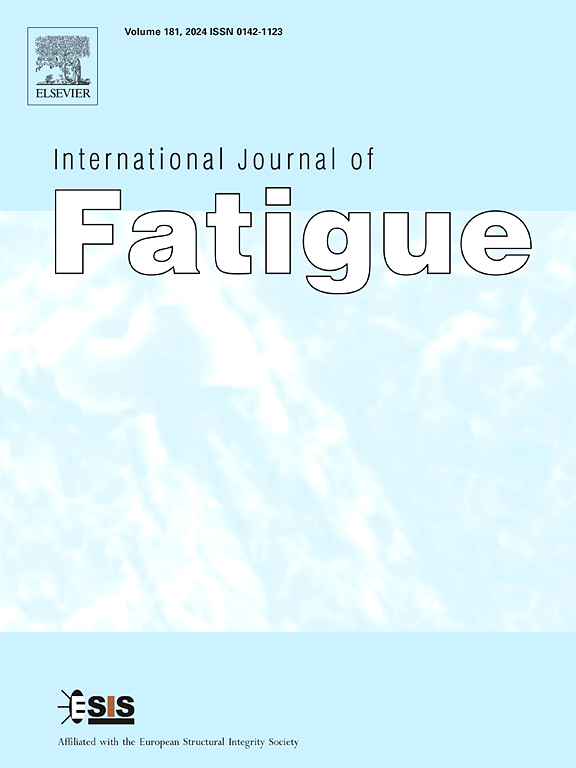Research on the microscopic characteristics of low-cycle-fatigue and creep coupling in cast aluminum alloys for cylinder heads
IF 5.7
2区 材料科学
Q1 ENGINEERING, MECHANICAL
引用次数: 0
Abstract
As one of the most structurally complex components in diesel engines, the cylinder head is subjected to increasing thermal loads. This paper investigates the microscopic characteristics of fracture morphology in cast aluminum alloy materials for cylinder heads under high-temperature low-cycle-fatigue-creep (LCFC) coupling conditions. The study explores the effect of creep on the microscopic evolution of the material’s microstructure, clarifies the fracture failure modes, and identifies the underlying causes. The results show that at 250 °C, the fracture surfaces in low-cycle-fatigue (LCF) tests mainly exhibit brittle fracture characteristics. As the temperature increases, the fracture gradually transitions from brittle to ductile. Due to the influence of creep, the fracture surfaces in LCFC tests already show ductile fracture characteristics at 250 °C. Microscopic observations reveal that the reasons for the more pronounced cyclic softening phenomenon in LCFC conditions are attributed to creep’s effects on dislocation annihilation, dislocation rearrangement, and the coarsening and dissolution of precipitates. Two fracture modes, defect-induced fracture and Si-phase fracture, are proposed. Observations indicate that high-temperature creep can cause the eutectic Si structures within the material to fracture more easily, thereby altering the fracture mode.
铸铝合金气缸盖低周疲劳蠕变耦合细观特性研究
作为柴油机结构最复杂的部件之一,气缸盖承受的热负荷越来越大。研究了铸铝合金气缸盖材料在高温低周疲劳蠕变(LCFC)耦合条件下断口形貌的微观特征。本研究探讨了蠕变对材料微观组织演化的影响,阐明了材料的断裂破坏模式,并找出了断裂破坏的根本原因。结果表明:在250℃时,低周疲劳断口主要表现为脆性断裂特征;随着温度的升高,断口逐渐由脆性向延性转变。在250℃下,由于蠕变的影响,LCFC试验的断口表面已经表现出延性断裂特征。微观观察表明,蠕变对位错湮灭、位错重排、析出相粗化和溶解的影响是造成LCFC条件下更明显的循环软化现象的原因。提出了缺陷诱导断裂和硅相断裂两种断裂模式。观察表明,高温蠕变使材料内部的共晶Si组织更容易断裂,从而改变断裂模式。
本文章由计算机程序翻译,如有差异,请以英文原文为准。
求助全文
约1分钟内获得全文
求助全文
来源期刊

International Journal of Fatigue
工程技术-材料科学:综合
CiteScore
10.70
自引率
21.70%
发文量
619
审稿时长
58 days
期刊介绍:
Typical subjects discussed in International Journal of Fatigue address:
Novel fatigue testing and characterization methods (new kinds of fatigue tests, critical evaluation of existing methods, in situ measurement of fatigue degradation, non-contact field measurements)
Multiaxial fatigue and complex loading effects of materials and structures, exploring state-of-the-art concepts in degradation under cyclic loading
Fatigue in the very high cycle regime, including failure mode transitions from surface to subsurface, effects of surface treatment, processing, and loading conditions
Modeling (including degradation processes and related driving forces, multiscale/multi-resolution methods, computational hierarchical and concurrent methods for coupled component and material responses, novel methods for notch root analysis, fracture mechanics, damage mechanics, crack growth kinetics, life prediction and durability, and prediction of stochastic fatigue behavior reflecting microstructure and service conditions)
Models for early stages of fatigue crack formation and growth that explicitly consider microstructure and relevant materials science aspects
Understanding the influence or manufacturing and processing route on fatigue degradation, and embedding this understanding in more predictive schemes for mitigation and design against fatigue
Prognosis and damage state awareness (including sensors, monitoring, methodology, interactive control, accelerated methods, data interpretation)
Applications of technologies associated with fatigue and their implications for structural integrity and reliability. This includes issues related to design, operation and maintenance, i.e., life cycle engineering
Smart materials and structures that can sense and mitigate fatigue degradation
Fatigue of devices and structures at small scales, including effects of process route and surfaces/interfaces.
 求助内容:
求助内容: 应助结果提醒方式:
应助结果提醒方式:


